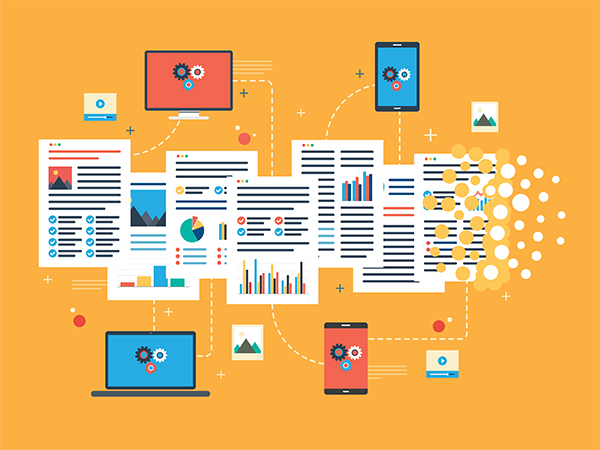October 3, 2018
The Hidden Costs of Bad Data

Poor data quality has become a critical issue for organizations, affecting the way they do business and their bottom lines. Gartner’s research on data quality found that in 2017, poor quality data had an annual average cost of $15 million.
The losses go beyond just dollars. Gartner’s research also found that poor-quality data weakens an organization’s competitive standing, shows consumer distrust and undermines critical business objectives.
But the news about data isn’t all bad: Gartner’s survey goes on to show how innovative organizations are using good-quality data to their advantage. When organizations treat data like a valuable asset, the report says, it can empower new business insights and create new opportunities.
In receivables management, data is critical. And data cleansing and analytics are proven to be the best tools for using data to your advantage. These services ensure a positive, productive consumer experience—from initial contact all the way to debt resolution.
Clean Data is Valuable Data
“Good data management starts with clean data,” says Cheryl Kananowicz, vice president of financial services at RevSpring. “In just a short period of time, your customer data can undergo hundreds of changes. By using a variety of data cleansing tools you can get—and keep—consumer data up to date and ensure the right consumers are receiving the right message.”
To state the obvious, trying to collect data from names or addresses that you can’t reach costs you money—a lot of money. The US Postal Service estimates returned mail costs at an average of $3 per piece. This price is based on operational costs, including postage, printing, handling, research, re-mailing and related processes.
Not only is mailing to a bad address inefficient, but it causes annoying account escalation that the consumer may perceive as harassment.
Multiply this cost by the number of bad addresses you have and the number of mailings you send to consumers, and you can see the financial and potential damage to your reputation that bad data is costing you.
Data cleansing solves these challenges. This process amends or removes from the database any records that are incorrect, incomplete, improperly formatted or duplicated. It incorporates various data cleansing tools, including NCOA, CAS, LACS, and others to create a more accurate list. A cleaner list leads to a more effective revenue collection process and an improved return on investment.
It’s not just printed mailing lists that need to be cleansed. Email addresses require the same level of attention as printed communication. Before sending any email, ensure that the email address is legitimate. This will protect both the consumer and your brand. The best practice is to gain express opt-in from the consumer.
Finally, just because you can reach a potential consumer doesn’t always mean you should contact them. Data cleansing can suppress addresses of consumers who should not be contacted—those who have declared bankruptcy, are deceased or possibly those who have previously initiated litigation with receivables firms.
Once the data is cleansed, your business has a better understanding of what action to take. Clean data can be used in one process, and special workflows and approaches can be applied to handle those records that have been flagged.
Finally, data cleansing is not just a one-time event. Your database is constantly changing, so your success depends on creating a process that will update your data on an ongoing basis.
Implementing a data cleansing practice will ensure that you deliver the right consumer the right message and create an engaging conversation that influences behavior and inspires action.
Make Your Data Work for You
There’s a lot of actionable information hiding in your data. The right data analytics tools enable you to extract that information and use it to create communications that engage the consumer and, more important, maximize collections.
Advanced analytics and business intelligence tools can provide actionable data that you can use to adjust current strategies and optimize the engagement workflow.
You can use a custom dashboard, for example, to track customer outreach and payments, and to report on real-time receivables. As you review that information, you can modify your engagement workflows to do more of what is working and eliminate what is not.
Testing is another way to capture actionable data that can boost consumer engagement and response. You can run A/B split tests to learn about consumer response to different campaign elements and identify areas to improve consumer outreach, design and calls to action to influence behavior.
Based on consumer response, you can implement the most effective option to a wider audience.
Work with Experts
Your data is valuable. Any vendor you choose for data cleansing and analysis should have the personnel, structure and processes in place to work with data from highly regulated industries. This is especially true for companies that specialize in receivables management. In this industry, it is critical to work with vendors that have a demonstrated understanding of specific nuances and regulatory requirements of the industry.
RevSpring offers the unique combination of technology, tools and expertise needed to access, track and analyze data, and create an actionable plan that influences a positive consumer outcome.
Learn more about Data Cleansing and Analytics best practices.